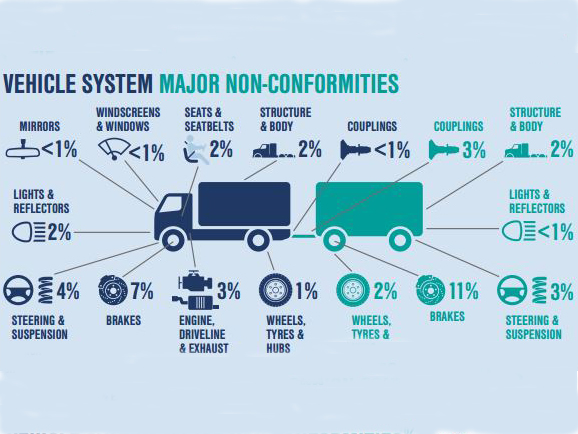National Roadworthiness Baseline Survey results shows how the country's fleet stacks up
The National Heavy Vehicle Regulator (NHVR) undertook Australia’s first national heavy vehicle health check, inspecting more than 7,000 heavy vehicles and 11,000 total units between August and November 2016, and the results are finally here.
The health check, officially coined the National Roadworthiness Baseline Survey (NRBS), targeted every sector of the road transport industry, accumulating a staggering 6 million data points relating to fleet health.
The results place Australia well when compared with the UK and US, who had substantially higher rates of non-conformity amongst their national fleets.
Federal Minister for Infrastructure and Transport Darren Chester says the results of the NRBS will provide further focus on inspection programs and help measure improvements in the mechanical condition of the heavy vehicle fleet.
“The survey covered 7,130 heavy vehicles between August and October last year,” Chester says.
“As a baseline of the fleet’s condition, the survey’s results will help the NHVR develop a national risk-based inspection approach to address high-risk components, systems, vehicles and operators.
“It will also help develop a consistent inspection approach.
“We’re working in partnership with the NHVR, state governments, various state organisations and with the heavy vehicle industry to reduce road trauma.
“These survey results are a great tool for the NHVR to use to improve safety and efficiency in the heavy vehicle sector, which of course improves safety for all motorists.”
Some key findings from the report are:
- 7130 vehicles inspected, made up of 11,066 vehicle units
- Younger vehicles were five times less likely to have a major non-conformity than vehicles 10-years and older, and 11 times less likely to have a major non-conformity than 13-year-old vehicles
- 11 per cent of hauling units and about 14 per cent of trailers recorded a major non-conformity
- 147 vehicle units were grounded, making up 1.3 per cent of the vehicles units inspected
- Brakes had the highest rate of major non-conformity, followed by steering and suspension, lights and reflectors, engines, drivelines and exhausts.
For NHVR CEO Sal Petroccitto the survey results will allow operators to update programs to ensure they address high-risk components and systems that are regularly found to be an issue during on-road inspections.
“The NHVR wanted to understand the rate of major non-conformity,” Petroccitto says.
“Where authorised officers found major non-conformities, the majority were assessed as safe enough to continue their journey but required repair within a specified period of time.
“The rate of major non-conformities in the Australian fleet compared well to the UK, which had a 35 per cent major non-conformity rate, and to the US where about one-fifth of vehicles inspected are grounded.
“However, with the average age of the fleet at nine years, reducing the rate of major non-conformity in older vehicles will be an area of focus.
“Interestingly, we saw a significant increase in the maintenance performance for vehicles in the National Heavy Vehicle Accreditation Scheme.
“It is pleasing to see that the scheme is delivering and continuing to demonstrate the value it provides to fleet safety.
“It is evidence of the NHVR’s hard work in delivering improvements to the schemes operation.
“Another first was the use of the National Heavy Vehicle Inspection Manual to provide nationally-consistent inspection standards. This consistency is something industry has asked for over many years and is a key objective of the Roadworthiness Program.
“I’d like to thank the 407 officers who worked 1049 shifts across 237 inspection sites throughout Australia to deliver this important national safety initiative.”
The survey will be used to develop programs using evidence and risk-based analysis of the survey data. Two such approaches will be a risk-based inspection and a consistent inspection framework.
There is also work being undertaken in the NHVR’s Roadworthiness Program to develop a national approach to the management and clearance of defects.
Further information about the survey results and the full report can be found at www.nhvr.gov.au/nrbs


